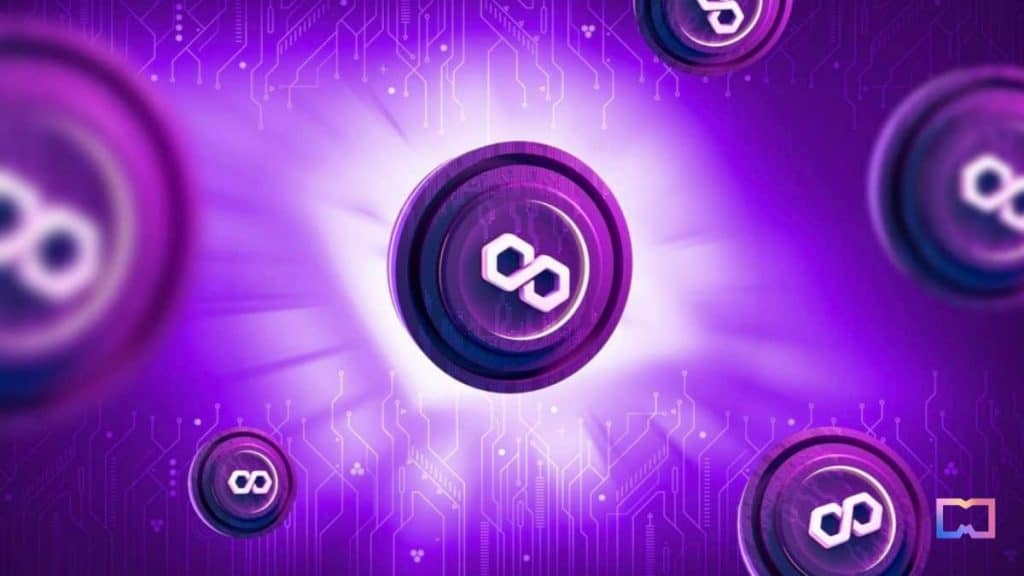Polygon Introduces POL Cryptocurrency on Ethereum, Anticipating the Polygon 2.0 Era


In Brief
Polygon Labs company has launched contracts for its upcoming cryptocurrency, POL, on the Ethereum mainnet.

Polygon Labs has taken a significant step forward in its evolution by deploying contracts for its new POL cryptocurrency on the Ethereum mainnet. This move follows a successful testnet deployment and reflects Polygon’s continuous commitment to innovation.
Earlier in September, the Polygon community had passed a series of Improvement Proposals, including PIP-17 and PIP-19. These proposals mapped out the transition from MATIC to POL, aligning with the architecture of the much-anticipated Polygon 2.0 upgrade. Designed to succeed MATIC, POL integrates seamlessly with the advanced features of Polygon 2.0. It aims to spearhead the next chapter in Polygon’s story.
The POL token upgrade is now live on Ethereum mainnet.
— Polygon (Labs) (@0xPolygonLabs) October 25, 2023
Polygon 2.0, released this summer, is a roadmap for scaling Ethereum to build the Value Layer of the Internet. POL unlocks that future.
POL is a next-generation token that can power a vast ecosystem of ZK-based L2 chains.… pic.twitter.com/gmrsu0ZqLz
Matic and Pol
The main distinctions between the two tokens lie in their intended functionalities. While MATIC has been the cornerstone of the Polygon ecosystem, POL promises to take it a notch higher. POL will not only serve as the primary cryptocurrency for Polygon 2.0 but also facilitate a vast network of zero-knowledge-based Layer 2 chains.
One of its striking features is a native re-staking protocol. This protocol empowers POL holders, allowing them to validate multiple chains and assume diverse roles on each chain, thus amplifying its utility in the ecosystem.
In their statement, Polygon Labs captures the core value of POL: “POL, a next-generation, high-efficiency token, will power a broad ecosystem of zero-knowledge-based Layer 2 chains. Its native re-staking protocol gives POL holders the flexibility to validate on numerous chains and assume diverse roles on each.”
However, it’s crucial to note that POL won’t immediately supplant MATIC. Such a monumental transition warrants governance approval and is timed with the launch of Polygon 2.0. As the upgrade approaches, several pivotal steps remain.
Among these are the introduction of a new staking layer to propel Polygon’s Layer 2 chains, a shift from Polygon’s proof-of-stake to zkRollup, and the integration of a zk-based interoperability and shared liquidity protocol for all Layer 2s, as highlighted by Polygon Labs. This roadmap sets the stage for what promises to be an exciting era in Polygon’s journey.
Disclaimer
In line with the Trust Project guidelines, please note that the information provided on this page is not intended to be and should not be interpreted as legal, tax, investment, financial, or any other form of advice. It is important to only invest what you can afford to lose and to seek independent financial advice if you have any doubts. For further information, we suggest referring to the terms and conditions as well as the help and support pages provided by the issuer or advertiser. MetaversePost is committed to accurate, unbiased reporting, but market conditions are subject to change without notice.
About The Author
Nik is an accomplished analyst and writer at Metaverse Post, specializing in delivering cutting-edge insights into the fast-paced world of technology, with a particular emphasis on AI/ML, XR, VR, on-chain analytics, and blockchain development. His articles engage and inform a diverse audience, helping them stay ahead of the technological curve. Possessing a Master's degree in Economics and Management, Nik has a solid grasp of the nuances of the business world and its intersection with emergent technologies.
More articles

Nik is an accomplished analyst and writer at Metaverse Post, specializing in delivering cutting-edge insights into the fast-paced world of technology, with a particular emphasis on AI/ML, XR, VR, on-chain analytics, and blockchain development. His articles engage and inform a diverse audience, helping them stay ahead of the technological curve. Possessing a Master's degree in Economics and Management, Nik has a solid grasp of the nuances of the business world and its intersection with emergent technologies.






















































